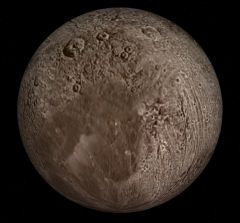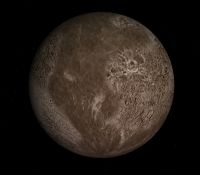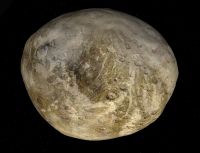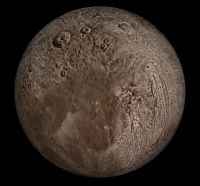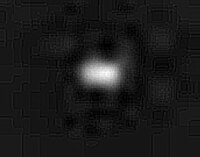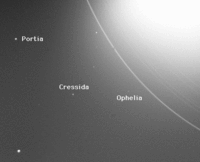Difference between revisions of "Portia"
(Added content.) |
(Added content.) |
||
| Line 2: | Line 2: | ||
!bgcolor="lightsteelblue" colspan="2" align="center" |Portia | !bgcolor="lightsteelblue" colspan="2" align="center" |Portia | ||
|- | |- | ||
| − | |colspan="2" align="center"|[[Image:Portia- | + | |colspan="2" align="center"|[[Image:Portia-outerplanets050125zip-Orbiter2005P1.jpg|240px]] |
|- | |- | ||
| − | |colspan="2" align="center"|<center>'''Portia from '' | + | |colspan="2" align="center"|<center>'''Portia from ''outerplanets050125.zip'' in Orbiter 2005P1'''</center> |
|- | |- | ||
!bgcolor="lightsteelblue" colspan="2"|Designation | !bgcolor="lightsteelblue" colspan="2"|Designation | ||
| Line 14: | Line 14: | ||
!bgcolor="lightsteelblue" colspan="2"|Planetary mean orbits | !bgcolor="lightsteelblue" colspan="2"|Planetary mean orbits | ||
|- | |- | ||
| − | |width="30%"|Epoch||align="right" width="50%"| | + | |width="30%"|Epoch||align="right" width="50%"|2005.41409993155 |
|- | |- | ||
| − | |width="30%"|Semimajor axis (a)||align="right" width="50%"| | + | |width="30%"|Semimajor axis (a)||align="right" width="50%"|66149306.2871059 m |
|- | |- | ||
| − | |width="30%"|Eccentricity (e)||align="right" width="30%"|0. | + | |width="30%"|Eccentricity (e)||align="right" width="30%"|0.000839133914882086 |
|- | |- | ||
| − | |width="30%"|Inclination (i)||align="right" width="30%"|97. | + | |width="30%"|Inclination (i)||align="right" width="30%"|97.74338855° <br> (1.7059439523116 radian) |
|- | |- | ||
| − | |width="30%"|Longitude of the ascending node (LAN, ☊)||align="right" width="30%"|167. | + | |width="30%"|Longitude of the ascending node (LAN, ☊)||align="right" width="30%"|167.5914942° <br> (2.92502337233249 radian) |
|- | |- | ||
| − | |width="30%"|Longitude of periapsis (ϖ)||align="right" width="30%"| | + | |width="30%"|Longitude of periapsis (ϖ)||align="right" width="30%"|246.7906174° <br> (4.30730883670517 radian) |
|- | |- | ||
| − | |width="30%"|Mean longitude (L)||align="right" width="30%"| | + | |width="30%"|Mean longitude (L)||align="right" width="30%"|606.4767892° <br> (10.5850168082542 radian) |
|- | |- | ||
!bgcolor="lightsteelblue" colspan="2"|Selected physical parameters | !bgcolor="lightsteelblue" colspan="2"|Selected physical parameters | ||
| Line 42: | Line 42: | ||
|width="30%"|LAN||align="right" width="30%"|2.9255 | |width="30%"|LAN||align="right" width="30%"|2.9255 | ||
|- | |- | ||
| − | |width="30%"|Note||align="right" width="30%"|*Elements given are from Portia.cfg ( | + | |width="30%"|Note||align="right" width="30%"|*Elements given are from Portia.cfg (outerplanets-050125.zip) |
|} | |} | ||
| Line 55: | Line 55: | ||
|- | |- | ||
!Add-on!!Source!!Version!!Author!!Type!!Release Date!!Compatibility!!Wiki article | !Add-on!!Source!!Version!!Author!!Type!!Release Date!!Compatibility!!Wiki article | ||
| + | |- | ||
| + | |[https://library.avsim.net/esearch.php?DLID=&Name=&FileName=outerplanets-050125.zip&Author=&CatID=root The Outer Planets 050125]||AVSIM||050125||Rolf Keibel<br>Tony Dunn||Scenery||26 January 2005||Orbiter 2005-P1|| | ||
|- | |- | ||
|[https://www.orbiter-forum.com/resources/uranus-minor-moons.1765/ Uranus Minor Moons]||O-F Resources||2004-12-14||Nighthawke||Scenery||14 December 2004|||| | |[https://www.orbiter-forum.com/resources/uranus-minor-moons.1765/ Uranus Minor Moons]||O-F Resources||2004-12-14||Nighthawke||Scenery||14 December 2004|||| | ||
| Line 61: | Line 63: | ||
|} | |} | ||
| − | <gallery> | + | <gallery widths="200" heights="200"> |
Portia-uranuszip.jpg|<center>Portia from ''uranus.zip'' in Orbiter 2002</center> | Portia-uranuszip.jpg|<center>Portia from ''uranus.zip'' in Orbiter 2002</center> | ||
Portia-UranusMoonszip-Orbiter2003P2.jpg|<center>Portia from ''UranusMoons.zip'' in Orbiter 2003P2</center> | Portia-UranusMoonszip-Orbiter2003P2.jpg|<center>Portia from ''UranusMoons.zip'' in Orbiter 2003P2</center> | ||
| + | Portia-outerplanets050125zip-Orbiter2005P1.jpg|<center>Portia from ''outerplanets-050125.zip'' in Orbiter 2005P1</center> | ||
Portia1.jpg|<center>Portia imaged by the [[w:Voyager 2|Voyager 2]] spacecraft in 1986,<br>from Wikimedia Commons</center> | Portia1.jpg|<center>Portia imaged by the [[w:Voyager 2|Voyager 2]] spacecraft in 1986,<br>from Wikimedia Commons</center> | ||
Uranus-Portia-Cressida-Ophelia-NASA.gif|<center>Voyager 2 image of Portia, [[Cressida]], and [[Ophelia]],<br>from Wikimedia Commons</center> | Uranus-Portia-Cressida-Ophelia-NASA.gif|<center>Voyager 2 image of Portia, [[Cressida]], and [[Ophelia]],<br>from Wikimedia Commons</center> | ||
Revision as of 02:54, 25 September 2024
Portia (Uranus XII, S/1986 U 1) is one of the inner satellites of Uranus. It was discovered by the Voyager2 spacecraft in January 1986. It is named after the heroine in Shakespeare's The Merchant of Venice.
Portia in Orbiter
Portia was first introduced into Orbiter with the add-on uranus.zip in November 2002.
| Add-on | Source | Version | Author | Type | Release Date | Compatibility | Wiki article |
|---|---|---|---|---|---|---|---|
| The Outer Planets 050125 | AVSIM | 050125 | Rolf Keibel Tony Dunn |
Scenery | 26 January 2005 | Orbiter 2005-P1 | |
| Uranus Minor Moons | O-F Resources | 2004-12-14 | Nighthawke | Scenery | 14 December 2004 | ||
| Uranus | AVSIM | Rolf Keibel | Scenery | 5 November 2002 | |||
Portia imaged by the Voyager 2 spacecraft in 1986,
from Wikimedia Commons
| Uranus's natural satellites |
|---|
| Named Satellites:
Ariel | Belinda | Bianca | Caliban | Cordelia | Cressida | Cupid | Desdemona | Ferdinand | Francisco | Juliet | Mab | Margaret | Miranda | Oberon | Ophelia | Perdita | Portia | Prospero | Puck | Rosalind | Setebos | Stephano | Sycorax | Titania | Trinculo | Umbriel Numbered Satellites: |
| See also: Pronunciation key | rings of Uranus |
| edit The Solar System | |
|---|---|
| Central star |
Sun (Sol) |
| Planets |
Mercury - Venus - Earth - Mars - Jupiter - Saturn - Uranus - Neptune |
| Natural satellites |
Moon - Phobos - Deimos - Io - Europa - Ganymede - Titan - more... |
| Add-ons |
Planets - Dwarf Planets - Small objects - Natural satellites - Alternative star systems |
 | This natural satellite related article is a stub. You can help Orbiterwiki by expanding it.
|
